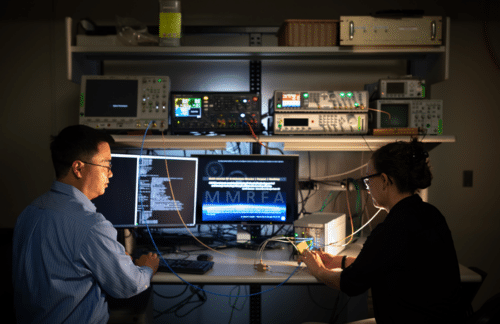Most systems of a military-grade are still analogue. Radar is now getting a significant digital upgrade from Sandia National Laboratories.

The Multi-Mission Radio Frequency Architecture is a new, digital, software-defined system being developed to replace dated analogue radars that are frequently utilised by the military. The updated architecture guarantees American warfighters unmatched performance and flexibility during intelligence, surveillance, and reconnaissance operations, especially while facing highly advanced adversaries.
In order to do various tasks including communication, navigation, and electronic warfare, Sandia’s digital radar can be altered. On equipment approximately the size of a small toolbox, users will be able to download the software and firmware they require for each mission.
“Agility means the ability for the sensor to be chameleon-like and adapt to the needs of the mission,” said Jacques Loui, who is leading Sandia’s technical team. “We want to be aware of where we are, where our friends and foes are, and we want to be able to operate unimpeded in contested environments.” “We are replacing legacy, analog-based signal processing hardware with state-of-the-art, digitally based signal processing firmware and software,” Loui added.
The amount of information wireless technologies can broadcast and receive is increased by 5G cellular technology. It is being used by Sandia to develop digital processing tools that transform enormous volumes of analogue data into digital signals and vice versa, including a digital version of synthetic aperture radar, a widely used remote radio frequency imaging device for various national security operations.
Extremely high performance is necessary for Sandia radars. Finally, technology has advanced to the point where the lab can move from analogue to digital while maintaining the highest level of realism. The new digital architecture may run numerous radio-frequency channels concurrently, either cooperating on a single purpose or operating independently on a number of separate functions, thanks to advanced wireless technology.
“The use of commercially available electronics is driving down the cost of these sophisticated systems, providing a clear path of upgrades as the technology continues to advance,” said Steven Castillo, recently retired Sandia senior manager who worked with the project. “The new architecture also sets the stage for utilizing new, highly agile antennas of the future.”
Sandia’s cross-organizational research team and foundational digital radar architecture are well-positioned to enable adoption of new generations of quickly evolving technology for increased performance while at the same time customizing the system for an expanding range of applications as the new radar technology continues to mature.






